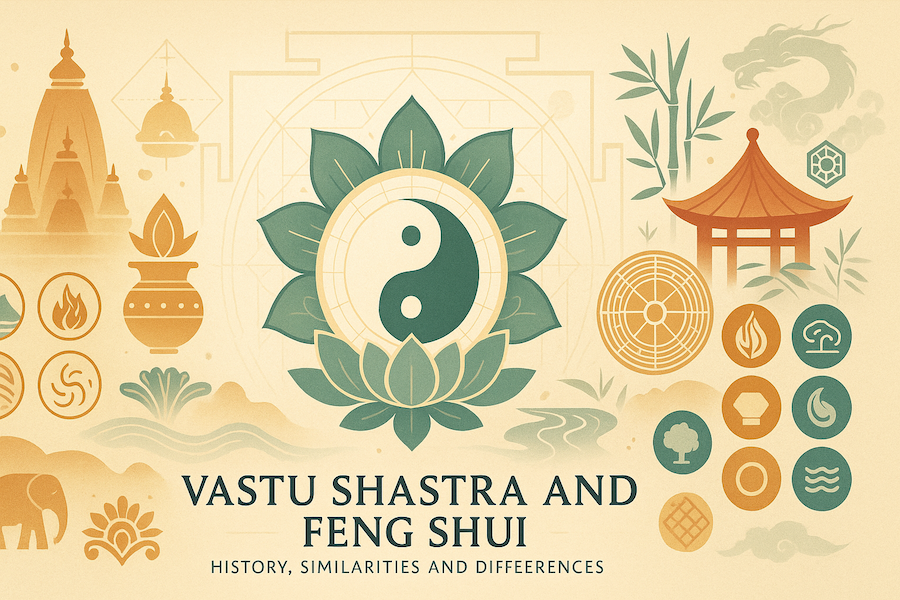Vastu Shastra and feng shui: history, similarities and differences
Overview
Vastu Shastra and feng shui are two enduring systems for shaping the built environment so that people, place and nature work in concert. Although they emerged independently in India and China, both traditions converge on key ideas such as cardinal orientation, five-element theories and the management of life force energy, while differing in tools, remedies and climate assumptions. This article synthesises their histories, shared principles and divergences, then offers practical guidance on when and how to apply each in contemporary homes and workplaces. Where relevant, core formulations follow the source text you provided.
What does “Vastu Shastra” literally mean
The Sanskrit term combines vāstu which denotes dwelling, building or site, and śāstra which denotes treatise or science. Vastu Shastra therefore means the science or doctrine of dwellings, a corpus of architectural guidance on site selection, spatial layout and proportional order intended to foster harmony and balance. Standard reference works also define vastu as an Indian architectural knowledge system rooted in design, measurement and orientation to natural forces.

